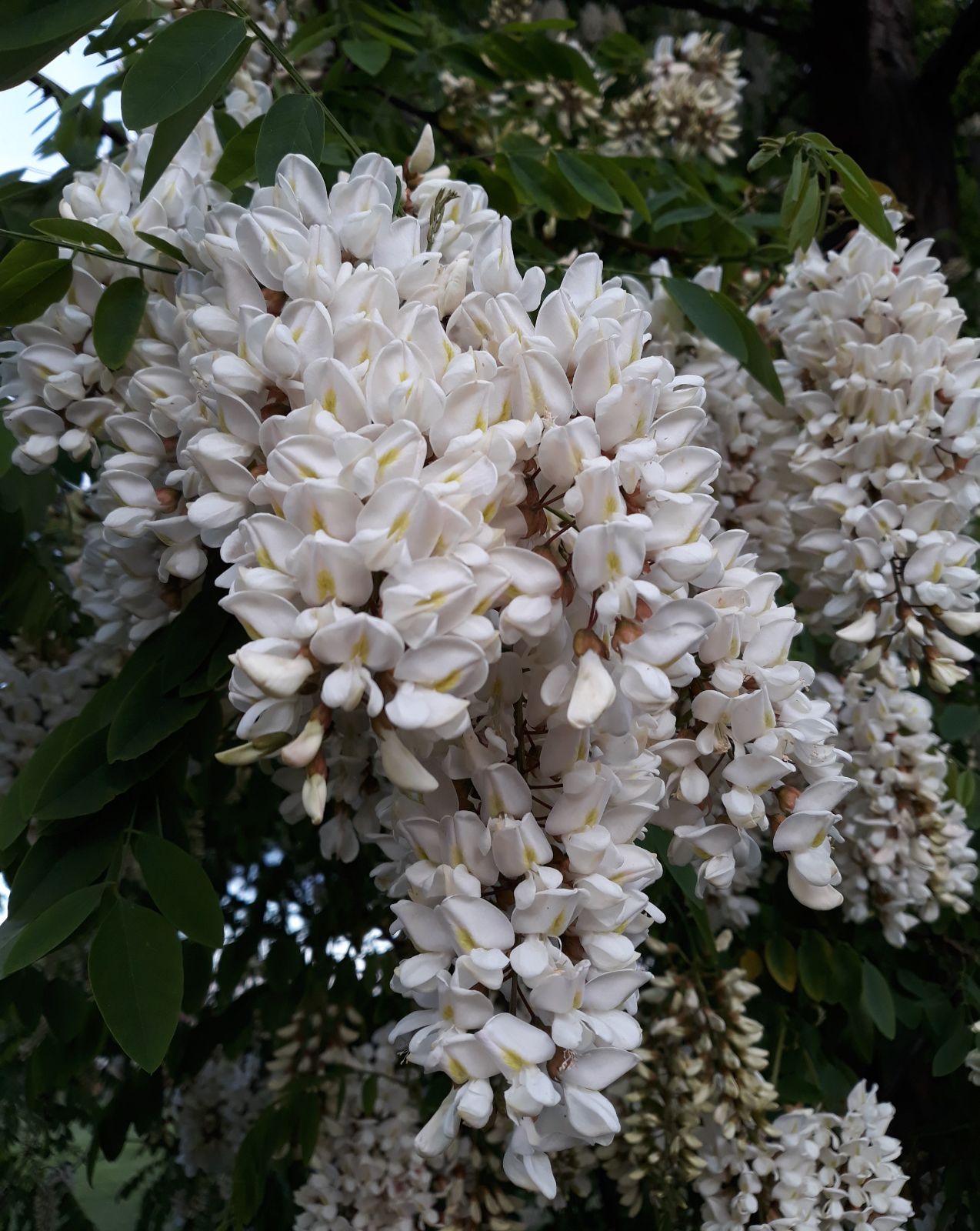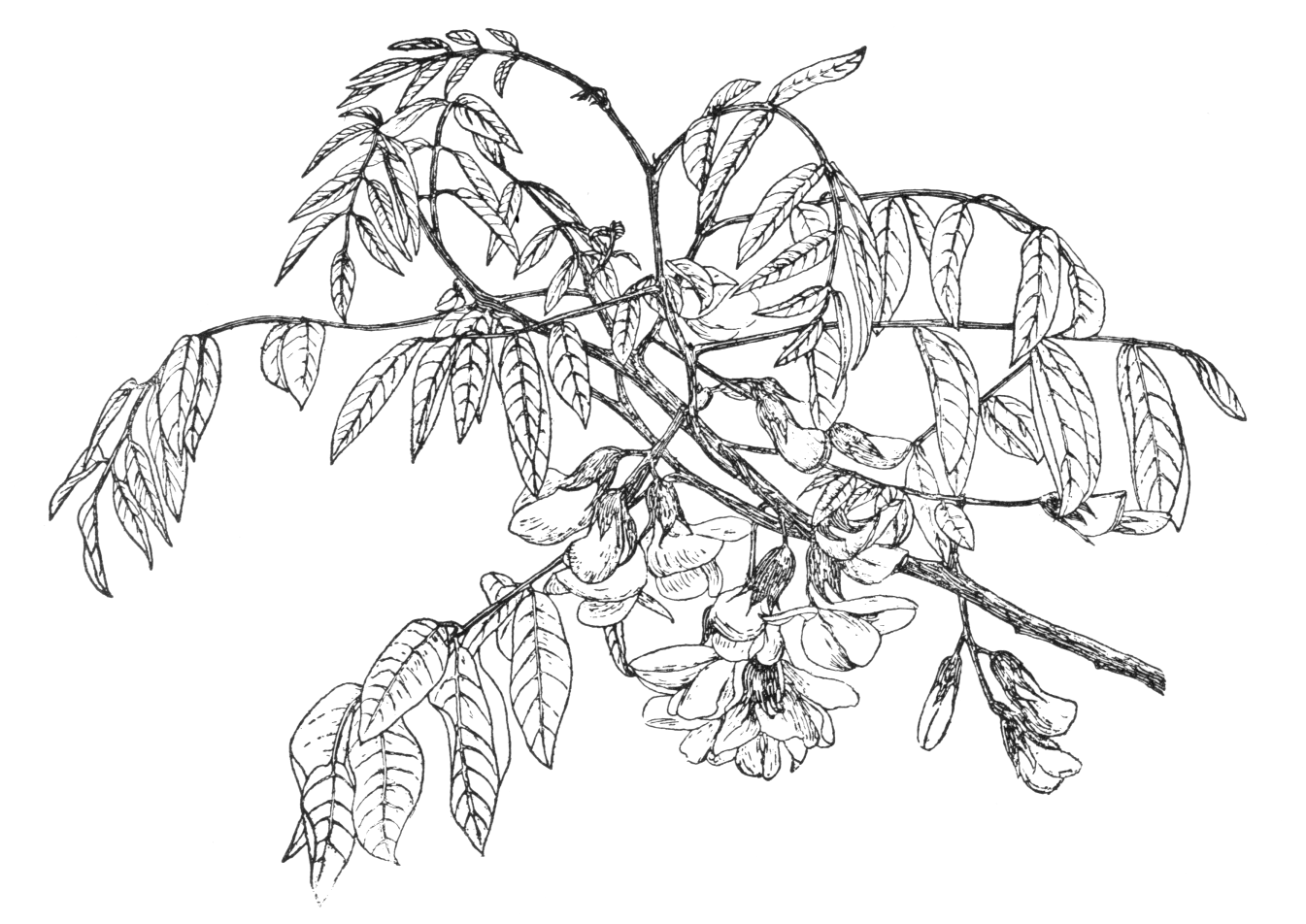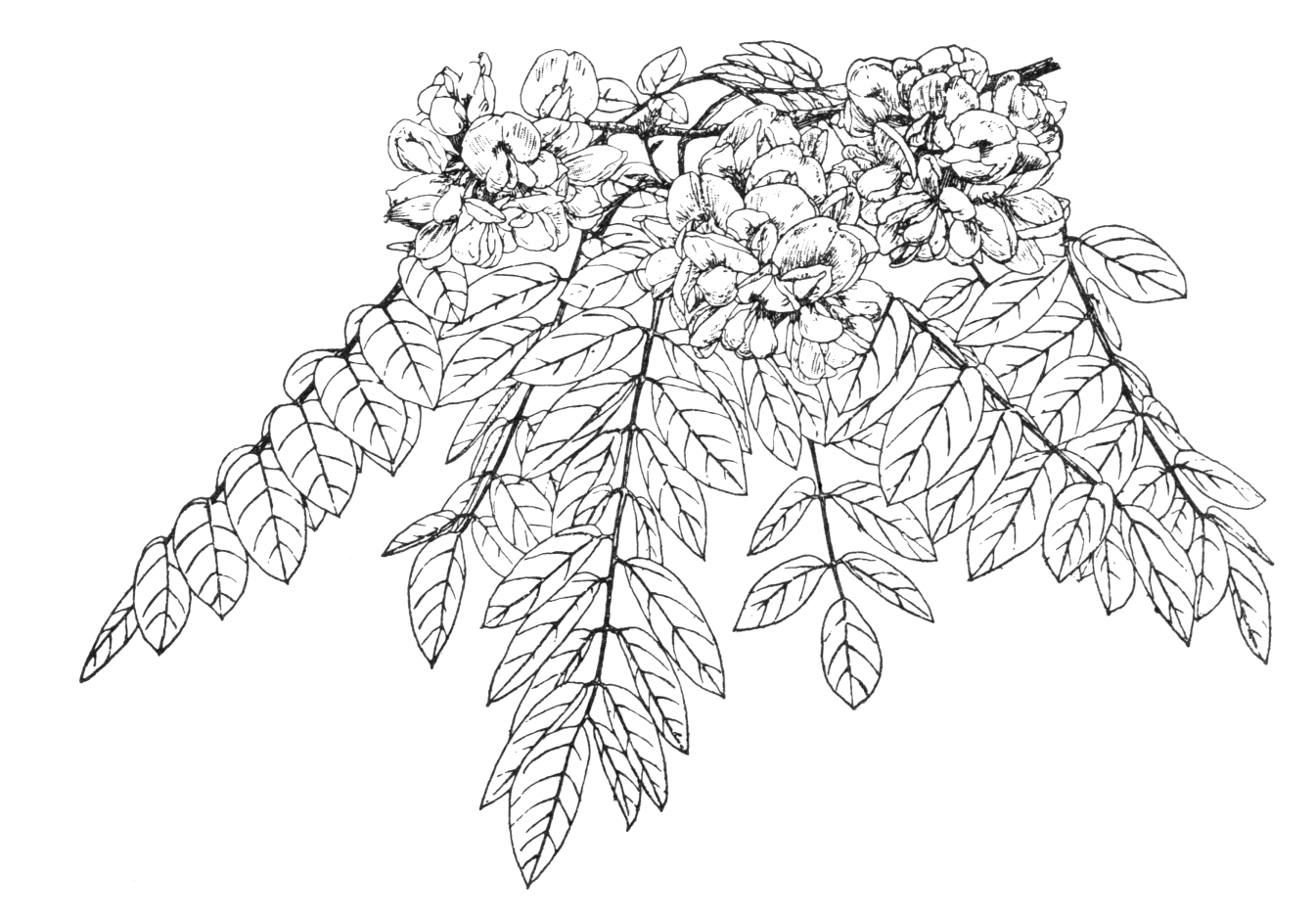Robinia
Credits
Article from Bean's Trees and Shrubs Hardy in the British Isles
Recommended citation
'Robinia' from the website Trees and Shrubs Online (treesandshrubsonline.
Family
- Leguminosae
A genus of about twenty deciduous trees and shrubs confined to N. America, whose name commemorates Jean Robin, herbalist to Henry IV of France (d. 1629). They are amongst the most ornamental of all hardy trees both in leaf and flower. The leaves are pinnate, and the pea-shaped flowers are borne in pendulous racemes. Pods flat, many-seeded. Stipules often developing into spines.
All the species thrive well in a soil of moderate quality. If given very rich or manured soil they grow so coarse and rank that the danger of damage by wind, due to the brittleness of the branches, is increased. The best method of propagation is by seed, but in the case of R. hispida and R. kelseyi, and garden varieties, it is usual to graft them on roots or stems of R. pseudacacia. This should be done in spring with leafless scions, and the union is more quickly and surely effected if the plants can be kept in a warm greenhouse. Provided they are on their own roots, R. hispida and R. kelseyi can also be increased by suckers or root-cuttings and plants raised in this way are more desirable than grafted ones, which are short-lived and apt to sucker freely from the stock. The only hardy tree with which the robinias can be confounded is Sophora japonica, whose unarmed branches and autumnal flowering readily distinguish it.
The best study of the cultivated robinias is: The Hon. Vicary Gibbs, ‘Robinias at Kew and Aldenham’, Journ. R.H.S., Vol. 54(1929), pp. 145–58.



